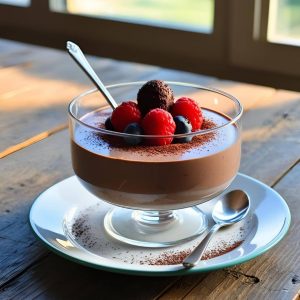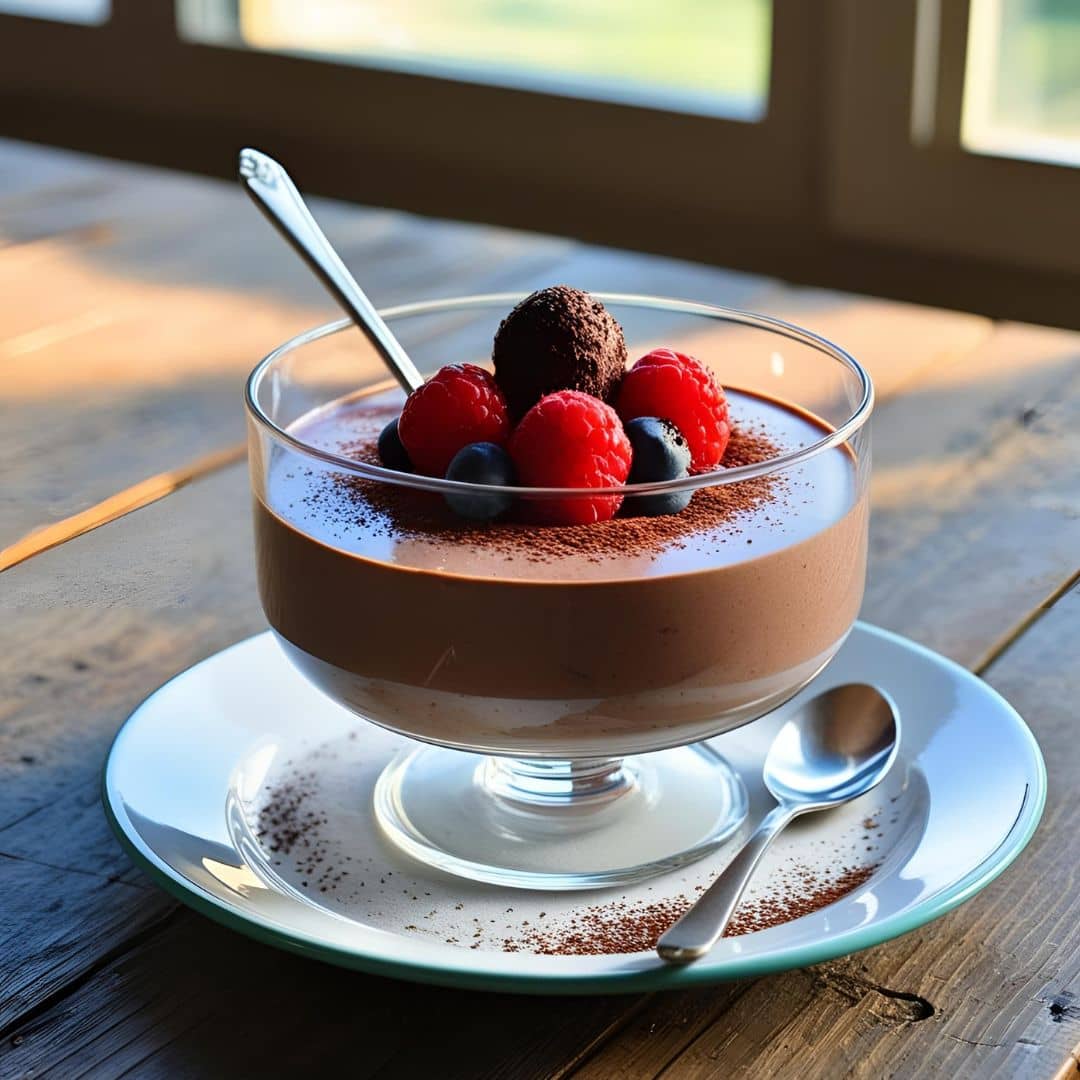Introduction
Protein pudding is a versatile, creamy dessert designed to satisfy your sweet tooth while providing a substantial protein boost. Perfect for fitness enthusiasts, those looking to maintain a healthy lifestyle, or anyone seeking a guilt-free indulgence, protein pudding combines rich flavors with nutritional benefits. Its smooth texture and customizable nature make it a popular choice for post-workout snacks, breakfast, or even as a meal replacement.
The History of Protein Pudding
While traditional pudding dates back to ancient civilizations, protein pudding is a more recent innovation, emerging from the fitness and health food movements of the late 20th and early 21st centuries. As high-protein diets gained popularity, health-conscious individuals sought creative ways to incorporate more protein into their meals. This led to the adaptation of classic desserts with added protein, giving rise to protein pudding. Its appeal lies in its simplicity, quick preparation, and the ability to tailor flavors and ingredients to personal preferences.
Ingredients Breakdown
- Protein Powder: The key ingredient, available in various types such as whey, casein, soy, pea, or hemp. Choose a flavor that complements your desired pudding taste.
- Milk or Milk Alternatives: Provides the liquid base, with options like almond milk, coconut milk, oat milk, or dairy milk.
- Greek Yogurt or Silken Tofu (Optional): Adds creaminess and additional protein.
- Sweeteners: Natural options like honey, maple syrup, stevia, or erythritol for low-calorie versions.
- Thickening Agents: Chia seeds, xanthan gum, or cornstarch help achieve the desired pudding consistency.
- Flavor Enhancers: Cocoa powder, vanilla extract, fruit purees, nut butters, or spices like cinnamon.
- Toppings (Optional): Fresh fruits, nuts, seeds, granola, dark chocolate chips, or coconut flakes.
Step-by-Step Recipe
- Choose Your Protein Base:
- Select your preferred protein powder (typically 1-2 scoops).
- Mix the Ingredients:
- In a blender or mixing bowl, combine the protein powder with 1-1.5 cups of your chosen milk.
- Add Greek yogurt or silken tofu if desired for extra creaminess.
- Include sweeteners, flavor enhancers, and a pinch of salt to balance the taste.
- Thicken the Pudding:
- Blend or whisk until smooth.
- If using chia seeds, let the mixture sit for 10-15 minutes, stirring occasionally until thickened.
- For xanthan gum or cornstarch, blend thoroughly and refrigerate for at least 30 minutes.
- Adjust Consistency:
- Add more milk if the pudding is too thick, or more thickening agent if too runny.
- Chill and Serve:
- Refrigerate the pudding for at least an hour to enhance flavors.
- Top with your favorite garnishes before serving.
Tips
- Use casein protein for a naturally thicker, creamier texture.
- Blend with frozen fruits like bananas or berries for a smoothie-like consistency.
- Experiment with flavor combinations, such as chocolate-peanut butter or vanilla-cinnamon.
- Adjust sweetness gradually to avoid over-sweetening.
- For meal prep, make a large batch and store in individual containers for grab-and-go convenience.
Variations and Customizations
- Chocolate Protein Pudding: Add unsweetened cocoa powder and dark chocolate chips.
- Berry Bliss: Blend with mixed berries and a dash of lemon juice.
- Tropical Twist: Incorporate coconut milk, mango puree, and shredded coconut.
- Peanut Butter Banana: Mix in mashed banana and a spoonful of natural peanut butter.
- Vegan Version: Use plant-based protein powder and non-dairy milk.
- Keto-Friendly: Opt for low-carb sweeteners and full-fat coconut milk.
Health Considerations and Nutritional Value
Protein pudding offers numerous health benefits, depending on the ingredients used:
- High Protein Content: Supports muscle repair and growth, making it ideal for post-workout recovery.
- Low Sugar Options: Suitable for low-carb or diabetic-friendly diets when using sugar substitutes.
- Rich in Micronutrients: Adding fruits, nuts, and seeds boosts fiber, vitamins, and minerals.
- Customizable for Dietary Needs: Easily adaptable for vegan, gluten-free, keto, and paleo diets.
- Calorie Control: Adjust portion sizes and ingredients to fit your caloric goals.
FAQ
- Can I make protein pudding without protein powder? Yes, substitute with high-protein ingredients like Greek yogurt, silken tofu, or cottage cheese.
- How long does protein pudding last in the fridge? It can be stored in an airtight container for up to 4-5 days.
- Can I freeze protein pudding? Yes, but the texture may change. It can become icier, resembling a frozen dessert.
- Is protein pudding suitable for weight loss? Yes, when portion-controlled and part of a balanced diet, it can aid in satiety and muscle maintenance.
- Why is my protein pudding grainy? This may be due to the protein powder. Blend thoroughly and consider using a finer-textured powder.
- Can I add vegetables to my protein pudding? Yes, mild-tasting veggies like spinach or cauliflower can be blended in for added nutrients without overpowering the flavor.

Protein pudding
Ingredients
- Protein Powder: The key ingredient available in various types such as whey, casein, soy, pea, or hemp. Choose a flavor that complements your desired pudding taste.
- Milk or Milk Alternatives: Provides the liquid base with options like almond milk, coconut milk, oat milk, or dairy milk.
- Greek Yogurt or Silken Tofu Optional: Adds creaminess and additional protein.
- Sweeteners: Natural options like honey maple syrup, stevia, or erythritol for low-calorie versions.
- Thickening Agents: Chia seeds xanthan gum, or cornstarch help achieve the desired pudding consistency.
- Flavor Enhancers: Cocoa powder vanilla extract, fruit purees, nut butters, or spices like cinnamon.
- Toppings Optional: Fresh fruits, nuts, seeds, granola, dark chocolate chips, or coconut flakes.
Instructions
Choose Your Protein Base:
- Select your preferred protein powder (typically 1-2 scoops).
Mix the Ingredients:
- In a blender or mixing bowl, combine the protein powder with 1-1.5 cups of your chosen milk.
- Add Greek yogurt or silken tofu if desired for extra creaminess.
- Include sweeteners, flavor enhancers, and a pinch of salt to balance the taste.
Thicken the Pudding:
- Blend or whisk until smooth.
- If using chia seeds, let the mixture sit for 10-15 minutes, stirring occasionally until thickened.
- For xanthan gum or cornstarch, blend thoroughly and refrigerate for at least 30 minutes.
Adjust Consistency:
- Add more milk if the pudding is too thick, or more thickening agent if too runny.
Chill and Serve:
- Refrigerate the pudding for at least an hour to enhance flavors.
- Top with your favorite garnishes before serving.
Notes
- Use casein protein for a naturally thicker, creamier texture.
- Blend with frozen fruits like bananas or berries for a smoothie-like consistency.
- Experiment with flavor combinations, such as chocolate-peanut butter or vanilla-cinnamon.
- Adjust sweetness gradually to avoid over-sweetening.
- For meal prep, make a large batch and store in individual containers for grab-and-go convenience.

